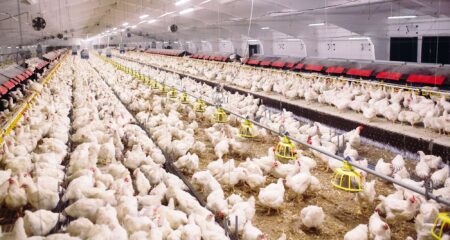Producers have increased beef output largely by sending larger cattle to slaughter, while pork farms have boosted production largely by increasing the number and sizes of litters, according to a pair of economists.
Beef production for all cattle has grown from 629 pounds per animal in 2000 to 724 pounds in 2024 even as the U.S. herd fell to its smallest since 1961.
“Increasing beef production per cow has come, largely, from increased weights. Dressed weights for fed steers and heifers have steadily increased for many years. There is less evidence of changes in calving rates boosting productivity over the last 25 years,” according to Texas A&M University economist David Anderson and University of Tennessee economist Charley Martinez.
Pork production meanwhile has increased by 52% from 3,041 pounds in 2000 to 4,635 pounds per sow. “Pigs per litter have increased from 8.8 in 2000 to about 11.8 in 2024, while litters per sow per year have grown from 1.8 to about 1.94,” the article says.
Lamb production, meanwhile, is declining. Production per ewe dropped from 57 pounds in 2000 to 48 pounds in 2024. The economists attributed the decline in part to the “emergence and growth of the non-traditional market, with many buyers desiring smaller carcasses.”
This article was originally published by Agri-Pulse. Agri-Pulse is a trusted source in Washington, D.C., with the largest editorial team focused on food and farm policy coverage.


:max_bytes(150000):strip_icc()/IMG_1591-2048x1365-362687ca596f4814967abffff2b4be2c.jpg)
:max_bytes(150000):strip_icc()/SuccessfulFarmingShareImage-8fed6410b43147a19ed5ea1e3243227f.png)



:max_bytes(150000):strip_icc()/5707778059_e7d85012cf_o-e523f16179a84727b5f96e2b1f7c4b69.jpg)

:max_bytes(150000):strip_icc()/IMG_7575-ac6db3006a2145109bcc2df421c7a962.jpeg)

:max_bytes(150000):strip_icc()/Markets-3-Corn-up-3-19bdbeee0041452db8bce0a0f1c8b883.jpeg)